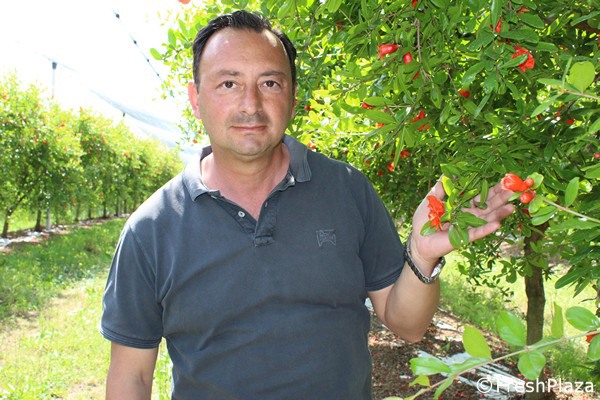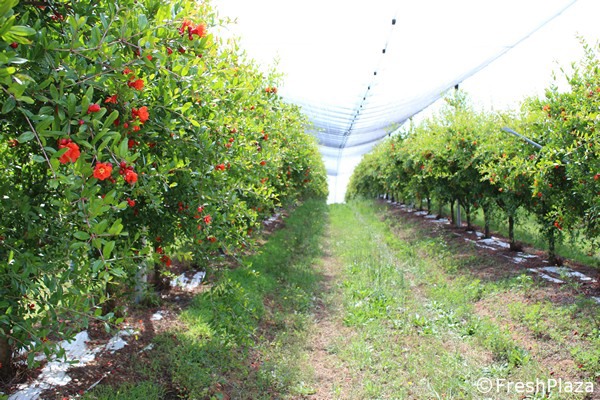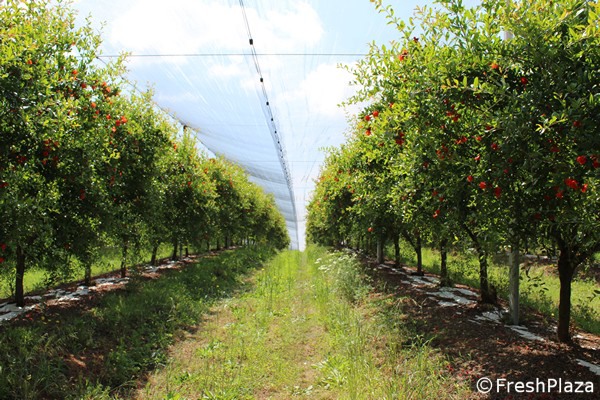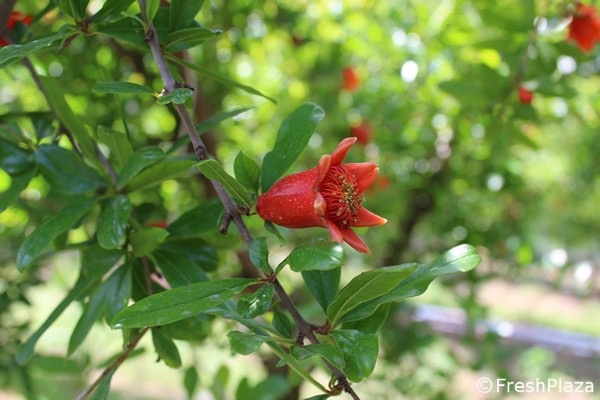More than 300 hectares of cultivated land, 4 varieties (Shany, Emek, Ako and Wonderful), a 13,000 m2 property with 18 cold rooms on 7,000 m2, including cold rooms with controlled atmosphere that can store for up to 5 months after harvesting are just some of the numbers that give a glimpse of the dimensions of a company like Masseria Fruttirossi, Italy's largest pomegranate grower.
We talked about plant spacing, irrigation, plant nutrition and general cultivation management with Davide De Lisi (pictured below), cultivation manager of this company in the southern Italian region of Apulia.

"All the orchards are located in Castellaneta, in the province of Taranto. The first planting dates back to 2014. The plants are tied up into an umbrella shape, with 'Y' poles and steel wires along which the branches are directed. The planting distance is 5.70x2/3 m and is done on a raised ridge for two reasons: to save water and to avoid water stagnation during excessive rainfall. A film with a light-reflecting function is then laid on that ridge, which ensures homogeneous ripening and intense fruit color."
Regarding plant nutrition, De Lisi explains that nitrogen, phosphorus and potassium are the most important components for a correct crop management. Zinc and iron are essential for flowering and fruit coloring. Calcium is applied to prevent fruit from splitting. The company also has a vermicomposting plant to produce humus to enrich the soil. This reduces the use of chemicals. Irrigation is done with an automated system connected to a weather station and equipped with tensiometers that detect the plant's water needs.

Pomegranate is in high demand on the market because of the fruit's healthy properties. But for a nice piece of fruit, growers get even better prices.
There are several abiotic diseases that Masseria Fruttirossi is attempting to limit through preventive strategies. "Scratches on the fruit, caused by rubbing against thorns and branches or by mechanical damage, are avoided with dome-shaped cultivation and harvesting using semi-automatic machines. Wounds and cracks caused by unbalanced water and calcium supply are reduced by controlled irrigation (even just before harvesting). Against rust, caused by tissue necrosis caused by high ambient moisture (dew) followed by high temperatures, we are evaluating the use of waterproofing agents on the skin of the fruit."

"Against sunburn and hailstorms, we use anti-hail nets with meshes of different sizes and colors in addition to the Y-shaped growing system. They not only protect the plants from possible hailstorms, but also filter a certain percentage of UV rays to prevent burns. Right now, we have only 100 acres covered, but in the coming months we will expand the protection against hail and sunburn to about 200 acres. Against spring frosts, we use windmills."
 Pomegranate flower
Pomegranate flower
We asked De Lisi what stage the plants are at now. "They are currently in full bloom, the most delicate stage of cultivation. Compared to last year, the crop is about 10 days behind schedule. This is because the temperatures are not exactly favorable for vegetative growth. In a few weeks we will see how the fruiting has progressed and then we will be able to provide a first forecast about the upcoming harvest. We always try to maintain good communication with our own crop technicians and external growers to maintain or gradually improve the quality of the fruit, because climate change and abnormal weather conditions continuously present us challenges."
For more information: Masseria Fruttirossi
C.da Terzo Dieci snc
74011 Castellaneta (Taranto) - Italy
+39 099 9647688
info@masseriafruttirossi.com
lomesuperfruit.com
